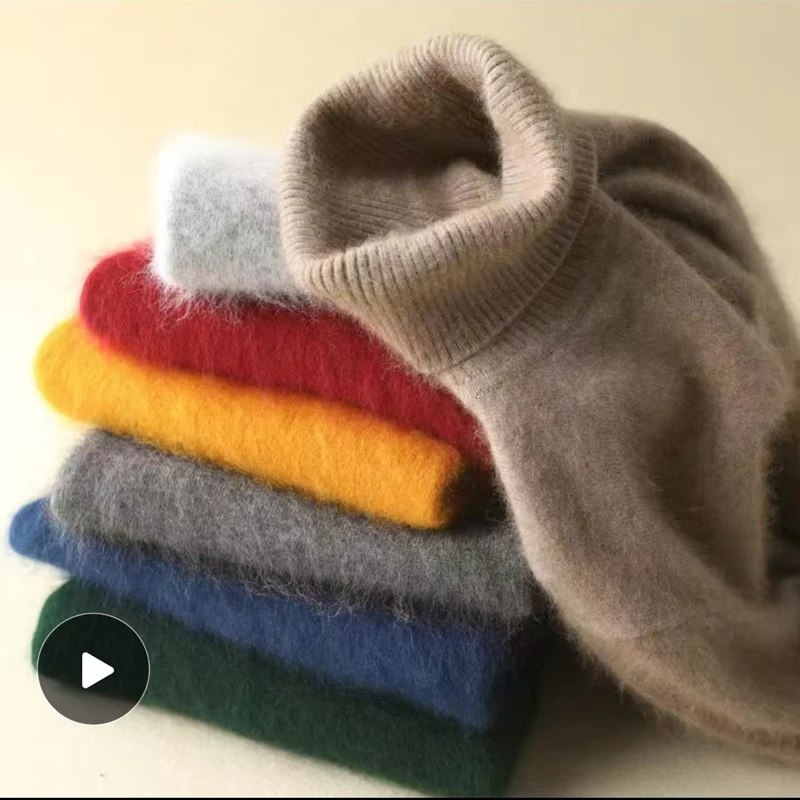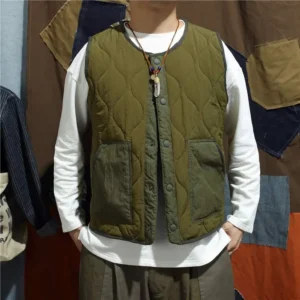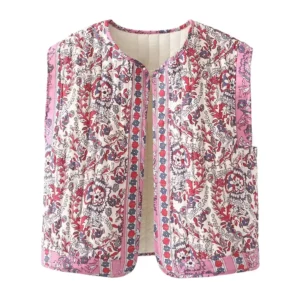Introduction: Breaking the Winter-Only Myth
Many people associate cashmere exclusively with winter wardrobes – thick sweaters, scarves, and hats designed to keep you cozy during the coldest months. But this luxurious fabric has been unfairly pigeonholed. The truth is that cashmere’s remarkable natural properties make it one of the most versatile materials for year-round wear, including during warmer seasons.
Premium cashmere, like that offered by Estate Cloth, possesses unique characteristics that allow it to adapt to different temperatures and climates. This adaptability has been recognized throughout history, with cashmere being worn across various seasons in multiple cultures around the world.
In this comprehensive guide, you’ll discover:
- Why high-quality cashmere actually performs beautifully in warmer weather
- How to select the right cashmere weights, weaves, and blends for seasonal versatility
- Practical styling tips for incorporating cashmere into your spring and summer wardrobes
- Special care considerations to keep your warm-weather cashmere looking its best
By understanding the true nature of fine cashmere, you can enjoy its exceptional comfort and luxury during every season of the year. Exploring year-round cashmere outfit ideas reveals the remarkable versatility of this premium fabric beyond just winter wear.
The Science of Cashmere: Why It Works in Warm Weather
To understand why cashmere excels in warmer weather, we need to examine its unique structural properties. Unlike most wools, which can feel heavy and stifling in higher temperatures, premium cashmere offers distinctive benefits that make it surprisingly suitable for multi-season wear.
Natural Breathability
The secret to cashmere’s versatility lies in its fiber structure. Cashmere fibers are naturally hollow, creating microscopic air pockets throughout the material. This unique structure allows air to circulate freely, preventing the trapped heat and moisture that causes discomfort in warmer conditions. The finer the cashmere (measured in microns), the more pronounced this breathability becomes – which is why Estate Cloth’s premium cashmere, with fibers under 16 microns, performs exceptionally well across seasons.
Thermoregulation Capabilities
Perhaps cashmere’s most remarkable property is its natural thermoregulation. The fibers actually adapt to your body temperature and the surrounding environment. In cooler conditions, those hollow fibers trap warm air to provide insulation. In warmer weather, the same structure helps dissipate excess heat and allows your skin to breathe. This makes cashmere uniquely responsive to your body’s needs regardless of the season.
Moisture-Wicking Properties
Premium cashmere naturally wicks moisture away from your skin, allowing it to evaporate quickly. This property becomes particularly valuable during warmer months when perspiration can be an issue. The result is a fabric that helps maintain dry, comfortable skin even as temperatures rise – a stark contrast to synthetic materials that can trap moisture and create discomfort.
Lightweight Nature
The finest cashmere fibers (those under 16 microns in diameter and exceeding 36mm in length) create incredibly lightweight garments. This delicate structure gives high-quality cashmere a barely-there feel against the skin while still providing the luxurious softness the material is famous for. The lightweight quality of premium cashmere makes it perfect for transitional seasons and even warm summer evenings.
The superior performance of Grade A cashmere in warm weather becomes apparent when compared to lower grades. Lesser quality cashmere often contains coarser, shorter fibers that lack the same breathability and thermoregulating properties, making them less suitable for year-round wear. Understanding can cashmere be worn year-round helps explain why investing in quality pieces provides much more versatility than seasonal alternatives.
Selecting the Right Cashmere for Warmer Seasons
Not all cashmere is created equal when it comes to warm-weather wear. The key to comfortable cashmere in higher temperatures lies in selecting the right weight, construction, and blends.
Understanding Cashmere Weight and Ply
Cashmere weight directly impacts its seasonal suitability:
- Lightweight cashmere (approximately 7-9 ounces per square yard or 200-250 grams per square meter) is ideal for warmer months
- Single-ply construction offers superior breathability compared to multi-ply options
- Fine gauge knits provide excellent drape while allowing maximum airflow
When shopping for warm-weather cashmere, always check the ply number – single-ply pieces typically offer the light, airy quality that works best when temperatures rise.
Optimal Weave Types
The weave pattern significantly affects how cashmere performs in warmer conditions:
- Open weaves create natural ventilation channels throughout the fabric
- Loose knits allow for greater air circulation and flexibility
- Fine gauge fabrics maintain the luxurious feel of cashmere while remaining light enough for comfort
- Mesh or pointelle patterns provide decorative elements that also enhance breathability
Ideal Cashmere Blends
While pure cashmere offers exceptional qualities, certain blends can enhance performance in warmer weather:
- Cashmere-silk blends (typically 70% cashmere, 30% silk) offer enhanced cooling properties and beautiful drape
- Cashmere-cotton combinations (60% cashmere, 40% cotton) provide structure with increased breathability
- Cashmere-linen blends (50% cashmere, 50% linen) create textural interest with excellent moisture management
Best Garment Types for Warm Weather
Certain cashmere pieces naturally lend themselves to warmer seasons:
- Lightweight cardigans for air-conditioned environments or cool evenings
- Sleeveless shells and tanks as luxurious alternatives to cotton basics
- Short-sleeved pullovers for transitional weather
- Fine-knit wraps and scarves that protect from evening breezes or overzealous air conditioning
- Open-front vests that layer beautifully without adding bulk
The versatility of short-sleeve cashmere sweaters makes them particularly valuable for warmer months, as they provide the luxury of cashmere in a weather-appropriate silhouette. Exploring different seasonal outfit ideas cashmere can inspire creative ways to incorporate this luxurious fabric into your warm-weather wardrobe.
Perfect Pairings: Fabrics That Complement Summer Cashmere
Creating comfortable, stylish outfits with cashmere in warmer months depends significantly on the companion fabrics you choose. The right pairings enhance cashmere’s natural properties while creating balanced, seasonally-appropriate looks.
Linen
- Why it works: Linen’s naturally cool, textured surface creates a beautiful contrast with cashmere’s smooth finish
- Best combinations: A lightweight cashmere tank with wide-leg linen pants, or a fine-gauge cashmere cardigan over a linen dress
- Styling tip: Embrace the textural contrast between cashmere’s softness and linen’s slightly rumpled look for an effortlessly elegant aesthetic
Light Cotton
- Why it works: Cotton’s breathability complements cashmere’s temperature-regulating properties
- Best combinations: A short-sleeve cashmere top with crisp cotton shorts, or a cashmere vest over a cotton button-down
- Styling tip: Look for lighter cotton weaves like poplin or lawn that won’t add unnecessary weight to the outfit
Silk
- Why it works: Silk’s cooling properties and luminous finish elevate cashmere pieces for dressier occasions
- Best combinations: A cashmere wrap with a silk slip dress, or a fine-knit cashmere shell with a flowing silk skirt
- Styling tip: Pair similar tones of silk and cashmere for a sophisticated monochromatic look, or create contrast with complementary colors
Lightweight Denim
- Why it works: Summer-weight denim provides structure while allowing cashmere’s luxury to take center stage
- Best combinations: A sleeveless cashmere sweater with lightweight denim shorts, or a cashmere tee with a chambray skirt
- Styling tip: Lighter washes and weights of denim feel more seasonally appropriate with warm-weather cashmere
Chambray
- Why it works: Chambray offers denim’s versatility with enhanced breathability
- Best combinations: A fine-knit cashmere pullover with a chambray shirt beneath, or a cashmere cardigan over a chambray dress
- Styling tip: The structured nature of chambray provides a nice counterpoint to cashmere’s soft drape
The temperature-regulating properties of cashmere turtlenecks make them surprisingly versatile even as temperatures rise, especially when paired with lighter fabrics for balance. For casual everyday style, learning how to wear cashmere with jeans style provides endless outfit possibilities that transition seamlessly between seasons.
Strategic Layering: The Key to Warm Weather Cashmere
Mastering the art of layering is essential for incorporating cashmere into your warm-weather wardrobe. Strategic layering not only helps you adapt to temperature fluctuations throughout the day but also maximizes the versatility of your cashmere pieces.
Create Dimension Without Bulk
- Start with the thinnest cashmere layer closest to your skin
- Add lightweight, breathable middle layers that can be easily removed
- Use fine-gauge cashmere as an outer layer for evening temperature drops
- Choose pieces with minimal seaming and construction for reduced weight
Address Air-Conditioned Environments
- Carry a lightweight cashmere wrap or cardigan for unpredictable indoor cooling
- Select neutral-colored cashmere pieces that complement multiple outfits
- Opt for cashmere items that fold compactly into a handbag when not needed
- Consider convertible styles that can be worn multiple ways depending on temperature
Transition from Day to Evening
- Begin with a cashmere foundation piece that works for both settings
- Add or remove layers to adjust for evening temperature drops
- Incorporate a cashmere accessory (like a light scarf) that can be styled differently as the day progresses
- Choose versatile silhouettes that can be dressed up or down with accessories
Layer for Unpredictable Weather
- Embrace the “rule of three” with a base layer, light cashmere layer, and removable outer layer
- Select complementary colors that create a cohesive look whether wearing all layers or just one
- Pay attention to proportions – fitted cashmere pieces layer more effectively under other garments
- Consider sleeve lengths carefully when layering multiple pieces
The key to successful layering lies in silhouette management – each layer should be slightly longer or differently proportioned than the one beneath it to create visual interest without unnecessary bulk. Understanding how to layer cashmere for spring and fall provides valuable techniques that can be adapted for even warmer weather.
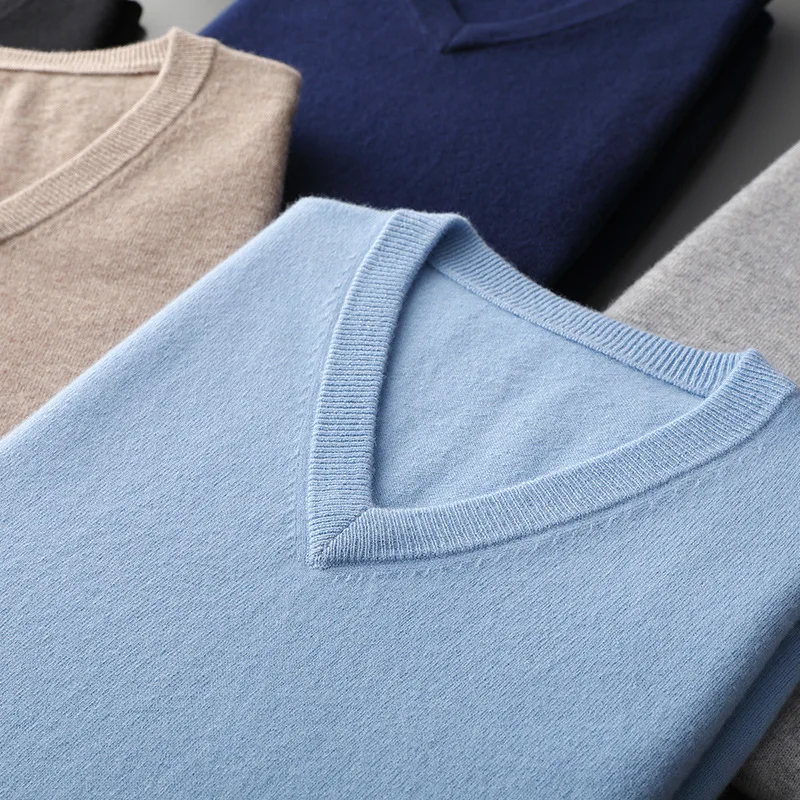
Seasonal Styling: Complete Outfit Ideas for Different Occasions
Incorporating cashmere into your warm-weather wardrobe is all about creating appropriate outfits for various occasions. Here are comprehensive styling ideas to help you wear cashmere confidently throughout the warmer months.
Casual Weekend
- Core cashmere piece: Lightweight short-sleeve cashmere tee
- Complementary garments: Relaxed linen shorts or a casual cotton skirt
- Accessories: Minimal jewelry, canvas tote, and a lightweight cashmere wrap for evening
- Footwear: Leather sandals or clean white sneakers
- Color palette: Natural tones like oatmeal, soft blue, or sage green
Office Environment
- Core cashmere piece: Fine-gauge cashmere cardigan or vest
- Complementary garments: Breathable cotton blouse, structured trousers or A-line skirt
- Accessories: Delicate necklace, leather belt, structured handbag
- Footwear: Closed-toe flats or low heels
- Color palette: Sophisticated neutrals with perhaps one subtle accent color
Evening Out
- Core cashmere piece: Sleeveless cashmere shell or lightweight wrap
- Complementary garments: Silk pants or a flowing midi skirt
- Accessories: Statement earrings, clutch bag, delicate cashmere scarf
- Footwear: Heeled sandals or elegant flats
- Color palette: Rich, deeper tones like navy, burgundy, or emerald
Travel Comfort
- Core cashmere piece: Multi-purpose cashmere wrap or open cardigan
- Complementary garments: Comfortable cotton tee, breathable travel pants
- Accessories: Convertible bag, compression socks for flights, cashmere eye mask
- Footwear: Slip-on loafers or comfortable sneakers
- Color palette: Easy-care darker neutrals that hide travel wear
Outdoor Events
- Core cashmere piece: Three-quarter sleeve cashmere pullover
- Complementary garments: Linen pants or a casual cotton dress
- Accessories: Wide-brim hat, sunglasses, small crossbody bag
- Footwear: Espadrilles or comfortable wedges
- Color palette: Light, bright hues that reflect rather than absorb heat
Creating year-round looks with timeless cashmere is about understanding how to adapt these luxurious pieces to different weather conditions and settings. The versatility of cashmere means you can create dozens of distinct outfits with just a few well-chosen pieces.
Color Selection for Warm-Weather Cashmere
Color choice significantly impacts how seasonally appropriate your cashmere appears in warmer months. Beyond just aesthetic considerations, color affects how the garment performs in higher temperatures and how it integrates with your existing warm-weather wardrobe.
Light Neutrals
Cream, ivory, beige, and light gray cashmere pieces create a naturally cooling effect both visually and physically. These colors reflect rather than absorb sunlight, making them practical choices for warmer conditions. Light neutrals also provide exceptional versatility, pairing effortlessly with both muted and vibrant seasonal colors. A pale beige cashmere tee serves as an elevated alternative to basic white cotton while offering superior comfort and drape.
Pastels
Powder blue, blush pink, mint green, and other soft pastels capture the essence of spring and summer while maintaining cashmere’s sophisticated appeal. These gentle hues transition beautifully between seasons and complement the natural brightness of summer light. A lavender cashmere cardigan, for instance, pairs beautifully with white jeans and floral prints for a quintessential warm-weather ensemble.
Bright Accents
Coral, turquoise, sunshine yellow, and other vibrant hues bring energy and seasonally-appropriate cheer to cashmere pieces. These brighter options work particularly well for accessories like scarves or small cashmere items that won’t overwhelm your outfit. A vivid blue cashmere shell beneath a neutral blazer adds just the right touch of color to enliven professional warm-weather attire.
Earth Tones
Terracotta, olive, sand, and soft amber connect cashmere to the natural world, creating harmony with summer environments. These colors mask potential perspiration marks more effectively than lighter options while still maintaining a seasonally appropriate feel. An olive cashmere vest pairs beautifully with natural linens and lighter denims for a sophisticated yet relaxed summer look.
When selecting colors, consider how they’ll transition between seasons – a well-chosen shade can extend the wearability of your cashmere investment across more months of the year. Versatile women’s cashmere pullovers in carefully selected colors can become the foundation of your year-round wardrobe, adapting to seasonal styling needs with simple accessory changes.
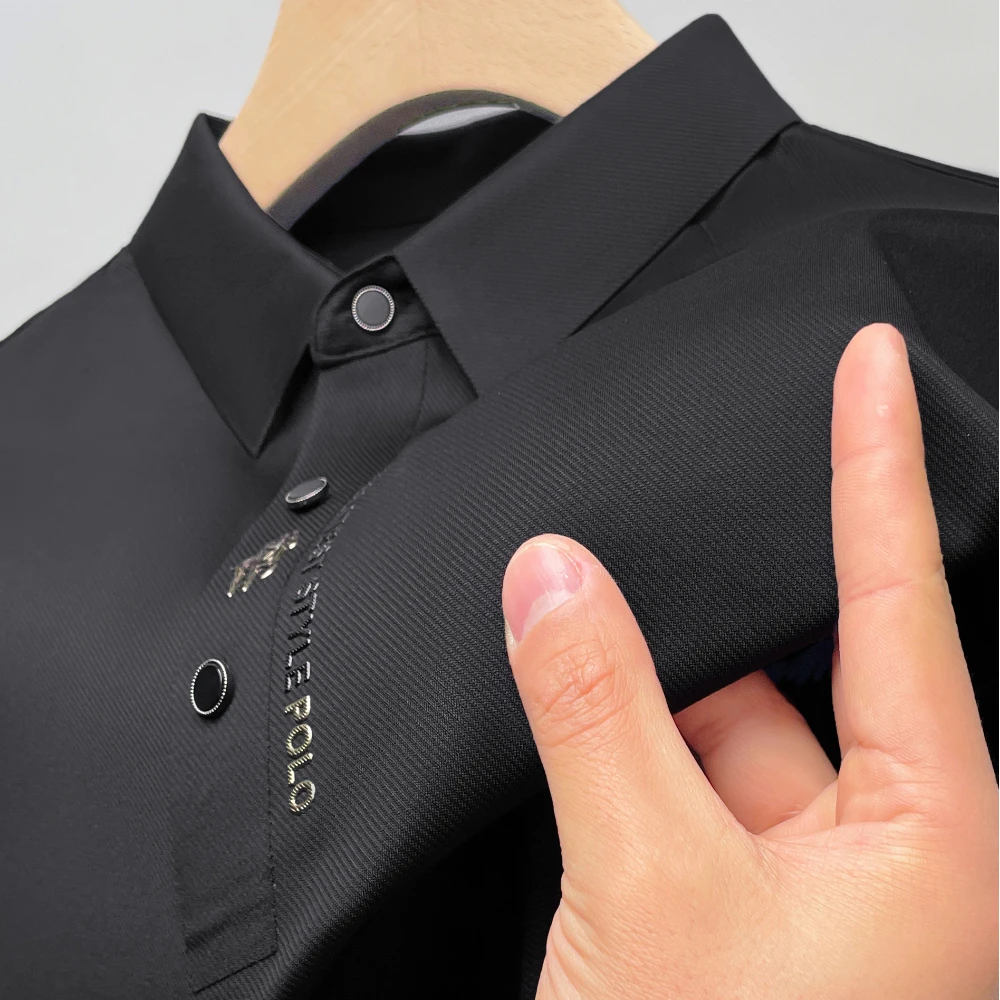
Warm Weather Cashmere Care: Special Considerations
Caring for cashmere during warmer months requires specific attention to the unique challenges of the season. Proper maintenance ensures your luxury pieces remain beautiful and functional throughout changing temperatures.
Addressing Warm Weather Challenges
Warm weather creates several specific concerns for cashmere care:
– More frequent wearing may increase potential for pilling
– Direct sunlight can fade colors over time
– Contact with sunscreen and body products may leave residue
– Perspiration can affect fiber integrity
– Proper storage becomes crucial during non-use periods
Hand Washing vs. Dry Cleaning
Hand washing is generally preferable for warm-weather cashmere care:
1. Use lukewarm water (approximately 85°F/30°C) – never hot
2. Select a gentle detergent specifically formulated for cashmere or delicates
3. Soak for 10-15 minutes without agitation
4. Rinse thoroughly with cool water
5. Press gently between towels to remove excess moisture – never wring
For heavily soiled items or structured garments, occasional dry cleaning may be necessary, but limit this to reduce chemical exposure.
Drying Techniques for Humid Conditions
Humidity presents special challenges when drying cashmere:
1. After pressing between towels, lay flat on a fresh, dry towel
2. Shape the garment carefully to original dimensions
3. Use a circulating fan to speed drying in humid environments
4. Keep away from direct sunlight which can cause fading
5. Allow 24-48 hours for complete drying depending on humidity levels
6. Ensure garment is completely dry before storing to prevent mildew
Preventing and Addressing Pilling
Warm-weather wear often increases friction that causes pilling:
1. Hand wash items after 2-3 wears to remove debris that contributes to pilling
2. Use a high-quality cashmere comb or pill shaver for gentle removal
3. Store items flat rather than hanging to prevent stretching
4. Avoid rough surfaces that may cause excessive friction
Between-Wear Freshening
For cashmere worn in warm weather but not visibly soiled:
1. Air garments for 24 hours before returning to storage
2. Use a garment steamer held at least 6 inches away to refresh
3. Spot-clean minor marks with a damp cloth and mild detergent
4. Place briefly in a freezer bag and freeze overnight to eliminate odors naturally
Understanding the complete guide to cashmere care helps ensure your investment pieces remain beautiful and functional throughout all seasons, maximizing their versatility and longevity.
Cashmere Wrap Sweaters, Women's Cashmere Pullovers
$75.89 Select options This product has multiple variants. The options may be chosen on the product pageCashmere Cable Knit Sweaters, Women's Cashmere Pullovers
Price range: $111.82 through $112.93 Select options This product has multiple variants. The options may be chosen on the product page- Price range: $171.47 through $181.33 Select options This product has multiple variants. The options may be chosen on the product page
Cropped Cashmere Sweaters, Women's Cashmere Pullovers
$155.77 Select options This product has multiple variants. The options may be chosen on the product page- Price range: $87.29 through $91.47 Select options This product has multiple variants. The options may be chosen on the product page
- Price range: $108.11 through $130.03 Select options This product has multiple variants. The options may be chosen on the product page
Common Concerns: Addressing Hesitations About Warm Weather Cashmere
Many people have understandable concerns about incorporating cashmere into their warm-weather wardrobes. Let’s address these common questions to help you confidently enjoy this luxurious fabric year-round.
“Won’t I be too hot in cashmere during summer?”
Not necessarily. Premium cashmere’s hollow fiber structure creates exceptional breathability and natural temperature regulation. Single-ply, lightweight cashmere actually helps your body maintain comfort by wicking moisture away from your skin while allowing air circulation. The key is selecting the right weight and construction – a fine-gauge cashmere tee can be more comfortable in warm weather than many synthetic alternatives that trap heat against your skin.
“Is it worth investing in cashmere for year-round use?”
When you consider cost-per-wear, high-quality cashmere becomes remarkably economical if worn across multiple seasons. A premium piece that transitions from winter layering to summer evenings significantly increases its value compared to season-specific items. Additionally, the exceptional comfort, durability, and timeless appeal of well-made cashmere means these pieces remain in your wardrobe far longer than trendy seasonal items.
“How do I prevent moth damage during storage?”
Clean storage is essential – moths are attracted to body oils and food particles, not the cashmere itself. Always clean items before storing, then place in breathable cotton bags with cedar blocks or lavender sachets as natural repellents. Avoid plastic storage which can trap moisture and lead to mildew. Regular rotation and inspection of stored items prevents unwelcome surprises when you reach for them again.
“Will lightweight cashmere pill more easily?”
While finer cashmere can be more susceptible to pilling, high-quality pieces made with longer fibers (over 36mm) dramatically reduce this risk. The superior construction of premium cashmere like that from Estate Cloth, with proper care, maintains its beautiful appearance through regular wear. Using a gentle cashmere comb periodically removes any minor pills without damaging the delicate fibers.
“Can I wear cashmere in humidity?”
Cashmere actually performs remarkably well in humidity compared to many other natural fibers. Its moisture-wicking properties help it adapt to humid conditions, pulling perspiration away from your body and allowing it to evaporate. Lightweight cashmere vests provide an excellent option for humid climates, offering the luxury of cashmere with minimal coverage for maximum comfort.
Beyond Clothing: Unexpected Ways to Enjoy Cashmere Year-Round
Cashmere’s versatility extends well beyond traditional garments, offering luxurious comfort in unexpected forms throughout warmer months. These alternative applications allow you to enjoy cashmere’s unique properties in creative ways.
Ultra-Light Travel Companions
Featherweight cashmere travel blankets weighing just a few ounces provide perfect protection against aggressive air conditioning on planes, trains, and in hotels. These pack down to approximately the size of a paperback book, making them ideal companions for summer travel without adding significant weight to your luggage. Look for versions in natural colors that resist showing soil during travel.
Home Accents for Seasonal Transitions
Lightweight cashmere pillow covers and throws in seasonally appropriate colors bring luxury to summer living spaces. These pieces add textural interest without the heaviness of winter home accessories. A cashmere-covered lumbar pillow in a fresh aqua or coral creates instant sophistication on a porch swing or garden chair, while providing surprising durability against outdoor elements.
Unexpected Accessories
Fine cashmere scarves can transform into sophisticated hair accessories during warmer months. Try using a lightweight cashmere scarf as a headband, hair wrap, or tied around a ponytail for an elegant touch that’s also practical for managing hair in summer breezes. These versatile pieces move seamlessly from neck-wear to hair accessory as temperatures fluctuate throughout the day.
Sleep and Relaxation Enhancers
Cashmere-blend sleep masks provide gentle comfort for summer travel or afternoon naps. The temperature-regulating properties make these accessories particularly effective for creating optimal sleep conditions despite environmental challenges like varying hotel temperatures or bright summer mornings. The natural fibers remain comfortable against sensitive skin around the eyes without causing irritation.
Repurposing Older Cashmere
Give new life to cashmere pieces that may be past their prime as garments. A beloved sweater with worn elbows can become fingerless gloves for cool summer evenings or early morning gardening. Older cashmere pieces can also be felted and transformed into protective cases for electronics or sunglasses, combining practical protection with luxurious texture.
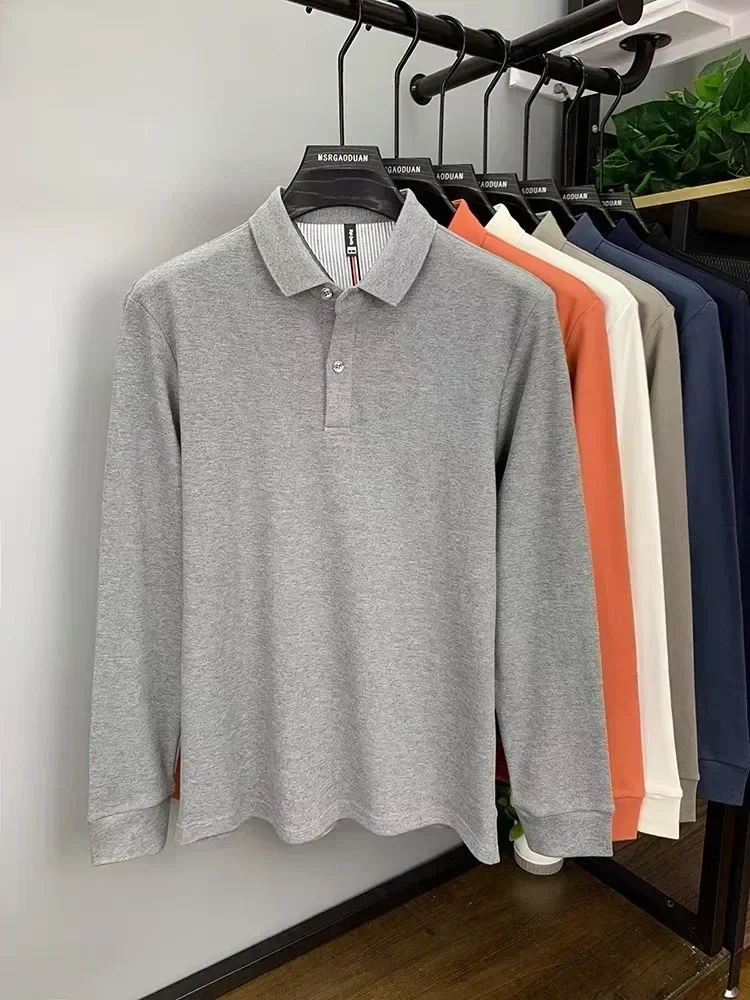
Investment Value: Why Quality Cashmere Works in Every Season
The true value of premium cashmere becomes most apparent when viewed through the lens of year-round wearability. While the initial investment may be higher than seasonal alternatives, the versatility and longevity of high-quality cashmere create exceptional value over time.
The Importance of Fiber Quality
The finest cashmere fibers – those under 16 microns in diameter – deliver the most impressive multi-season performance. These ultra-fine fibers create garments that drape beautifully in any season while providing superior temperature regulation. The longer staple length (exceeding 36mm) contributes to reduced pilling and enhanced durability, ensuring your investment maintains its beauty through years of regular wear across all seasons.
Longevity Versus Fast Fashion
While seasonal trends come and go, premium cashmere transcends fashion cycles with timeless appeal. Consider the environmental and financial impact: a quality cashmere piece may last 10+ years with proper care, compared to just 1-2 seasons for trend-focused alternatives. This longevity dramatically reduces the cost-per-wear while minimizing environmental impact – a true win-win for conscious consumers seeking both luxury and sustainability.
Versatility’s Hidden Value
The adaptability of fine cashmere across seasons multiplies its practical value. A single premium cashmere piece might replace 3-4 season-specific items in your wardrobe, reducing clutter while elevating your overall wardrobe quality. This versatility is particularly valuable for travel, where packable, multi-functional pieces like those found in versatile cashmere pieces for all seasons collections maximize suitcase space while ensuring comfort across varying climates.
Care as Investment Protection
Proper cashmere care significantly extends its usable lifespan across all seasons. Simple maintenance routines – gentle hand washing, appropriate storage, and prompt attention to minor issues – protect your investment and maintain the fabric’s natural performance properties. Unlike many synthetic alternatives that degrade with each cleaning, premium cashmere often improves with proper care, becoming softer while maintaining its structural integrity.
The multi-season versatility of quality cashmere represents not just a luxury purchase but a thoughtful investment in your wardrobe’s foundation. By selecting pieces specifically designed for year-round wear, you maximize both the pleasure and practicality of owning this exceptional natural fiber.

